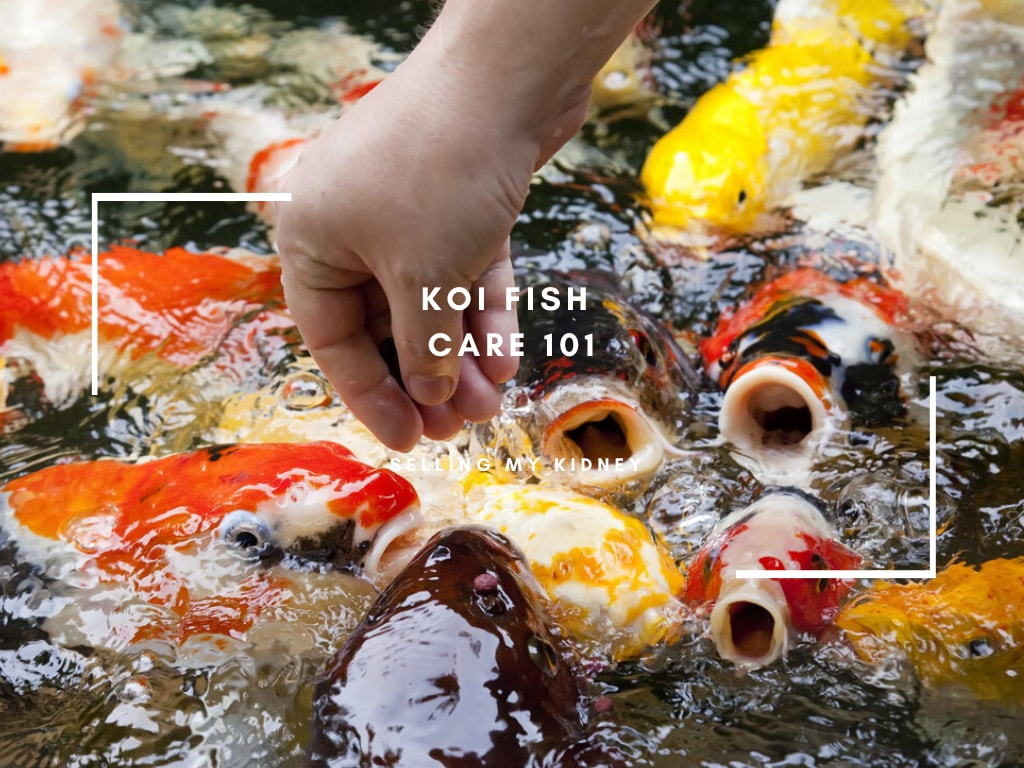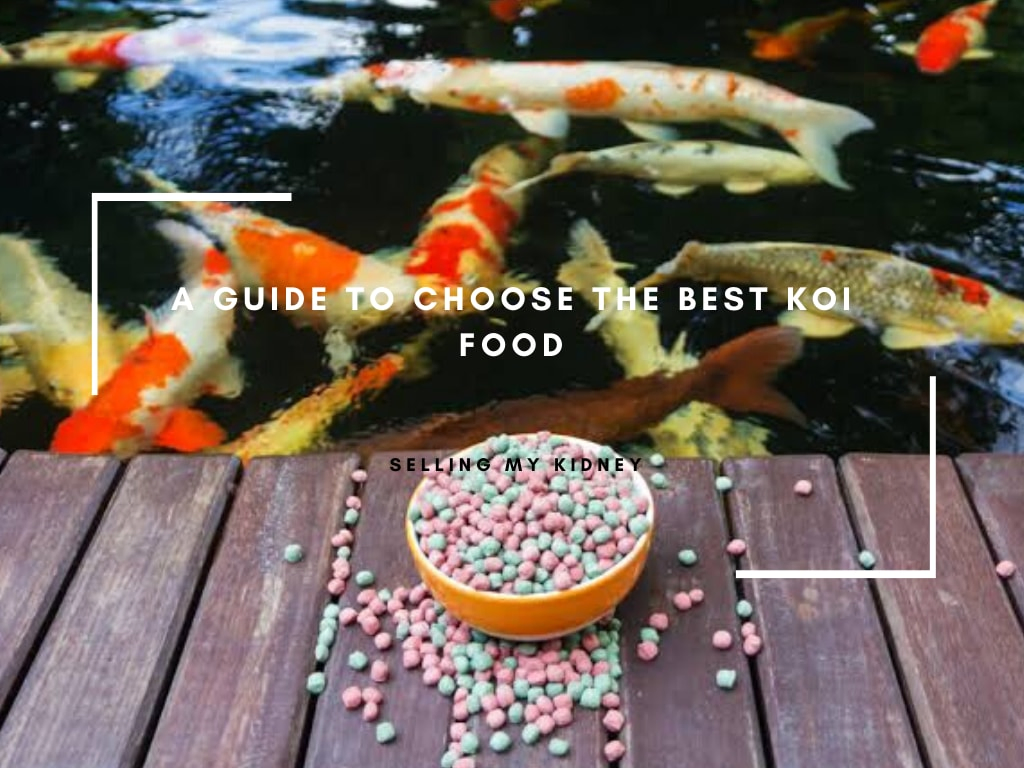Koi fish are a luxurious animal which has captivated hobbyists for centuries.
This vibrant carp has a rich history which dates back to ancient Japan when Chinese invaders introduced their humble ancestor, the black carp, to the country in around 200 BC.
Japanese farmers who kept the black carp for food noticed its colorful mutations. After a few generations of selective breeding, they created a fish prized for its beautiful scales – the modern-day koi fish.
Centuries later, people are still celebrating the beautiful koi fish. How much do you know about this regal species?
Koi Fish Types

There are over 100 different types of koi fish. While it can be difficult to remember each specific breed, there are a few popular ones you should know.
– Koromo: Koromo roughly translates to robes, which is a cute way of saying that these koi look as if they are wearing intricate clothes. This is used to describe white koi that have small red and indigo patterns on their pearly white skin.
– Ogon: Ogon means gold and is an accurate description for this breed. This term refers to a solid colored metallic koi – often silver or gold. They are very bright and shine brilliantly in a pond.
– Showa: Showa koi are similar to koromo, but also display bold streaks of black in their pattern. They look almost as if they have been painted.
– Tancho: Tancho are a patriotic koi fish who almost look as though they are swimming Japanese flags. Their name comes from the sacred red-crowned crane – a lucky symbol in Japanese culture. They are white with a red spot on their heads.
– Bekko: Bekko have a simple coloration, but it doesn’t make them any less elegant. They are a simple white fish with black “stepping stone” spots.
– Asagi: These interesting koi have an indigo body and some red at the start of their pectoral fins. The asagi koi almost look as though they are wearing little jackets.
– Doitsu: This special type of koi isn’t classified by its particular color pattern. Rather, the doitsu koi refers to a koi which doesn’t have scales. This gives it a sleeker appearance.
– Ginrin: Ginrin koi are also characterized by the characteristics of their scales rather than their color. These koi have diamond-shaped scales which reflect light in a particular way.
– Hirenaga: You may have seen these fish which are also called butterfly koi. These beautiful fish have exaggerated fins which look almost like wings gracefully wafting in the water.
Koi Fish Size
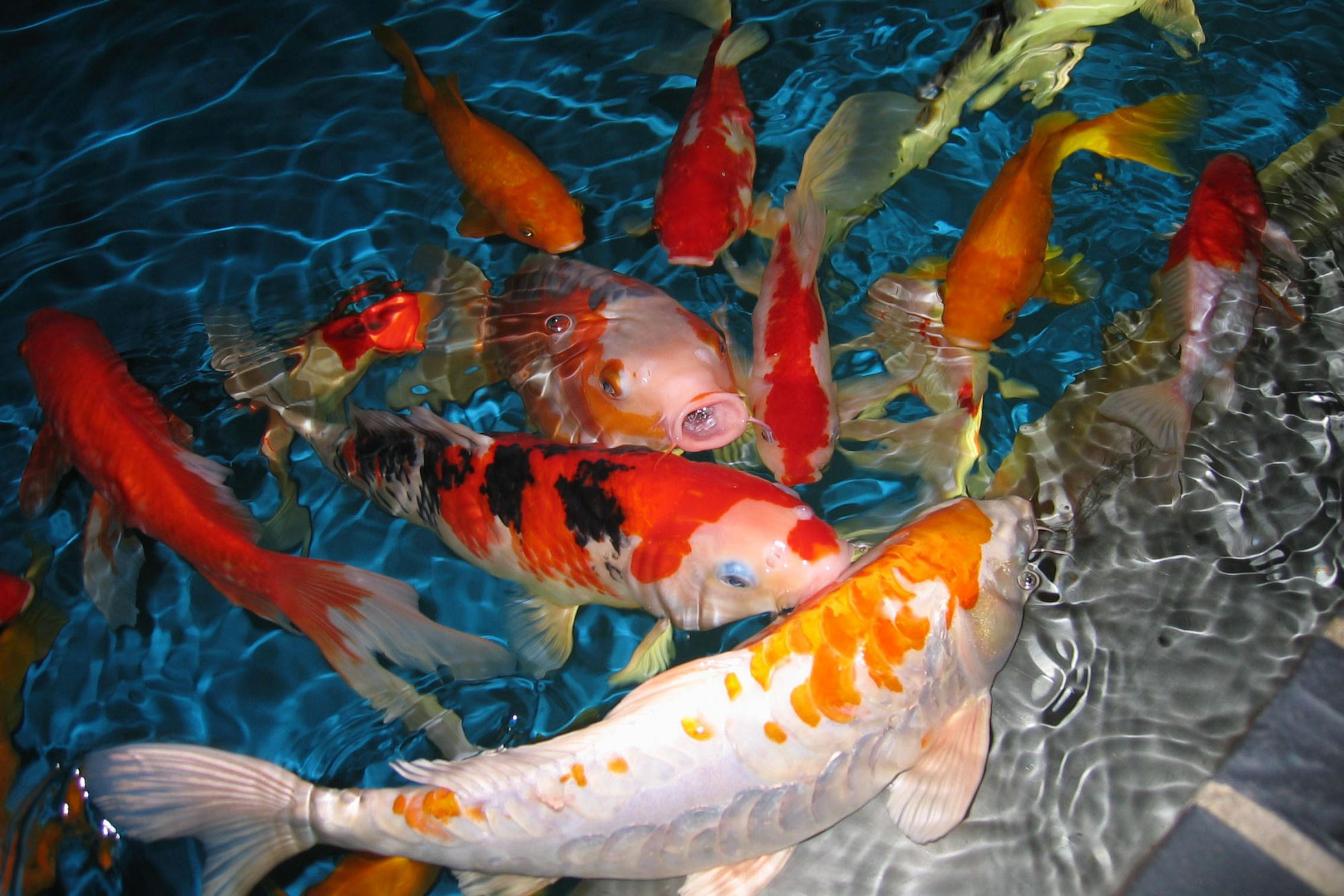
While some breeds of koi grow more than others, they are all pretty large in healthy adulthood. Koi fish are expected to reach up to 36 inches (91 centimeters) in length.
This is by no means a strict limit. There are koi which remain smaller despite having adequate space and conditions just as there are koi which can grow to over a meter long.
These fish are not just long. These hefty carp have an average weight of about 35lbs.
Again, this weight is subject to individual differences.
These fish are not born massive, though. When koi fish hatch, they are only about 7mm in length. Although they will not reach 35lbs overnight, they do grow relatively quickly.
By two years of age, a koi fish is expected to reach half of their adult length. If they don’t have adequate space and nutrition, these first two years of growth may not be accurate.
Koi Fish Habitat
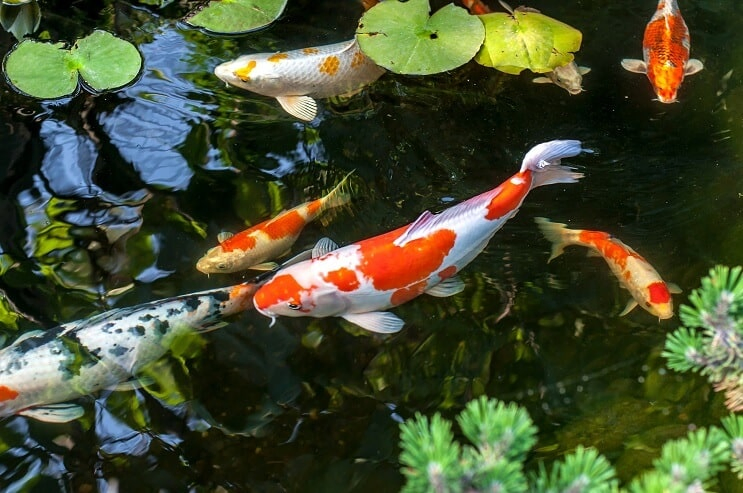
Koi fish are a human creation. You wouldn’t be able to go out in the wild and find native koi fish
swimming around without any human intervention.
Instead, you would find their wild cousins – the carp. In terms of habitat, wild carp and koi fish have pretty similar living requirements.
Like other members of the carp family, koi fish prefer cold water ponds. They can grow relatively large and, when kept in a healthy environment, can live for over 50 years.
In fact, some people pass down their koi fish from generation to generation.
These fish are pretty smart and can even recognize individual people. While they are kept for decoration, they are much more than that.
They are relatively hardy, but it is important to keep in mind that they give off a lot of ammonia. Due to this, and their impressive size, they must be kept in large enclosures.
For the most part, this is why they are kept in large ponds. If you have a large enough aquarium, it can also be a suitable environment for a koi fish.
Many people opt to raise young koi fish in indoor aquariums, then release them into ponds once they reach a certain size.
Even then, you require a decent-sized tank, and you must be prepared for the rapid growth of the koi.
Koi Fish Pond Requirements
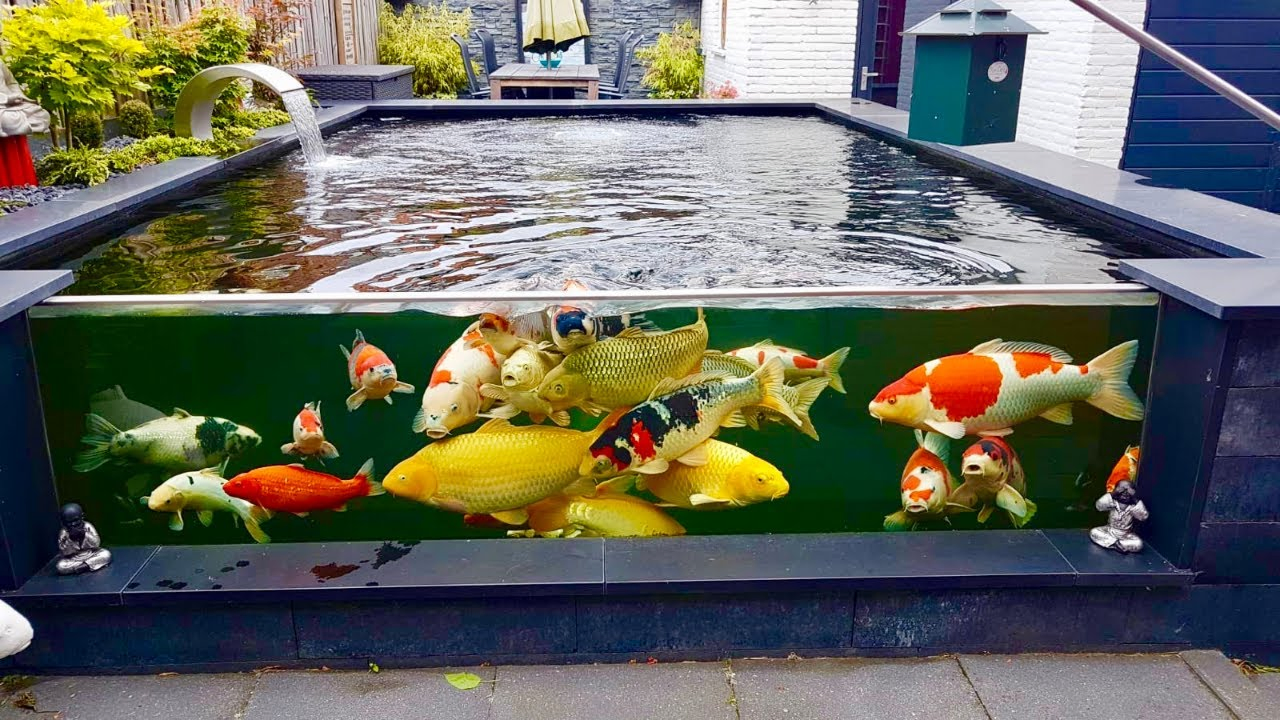
A small, young koi fish can be kept indoors for a while, as long as the tank has a capacity of at least 29 gallons. Once the koi matures and outgrows the tank, it will require a bigger home.
The minimum requirement for a mature koi is a 50-gallon tank. Additionally, the water needs to be at least three feet deep so they have enough space in which to swim.
More: Best Tank for Turtles
As koi are social, you will need to house more than one animal. For an indoor enclosure, this means having a huge tank with a hefty filtration system.
Outdoor setups are much more stable and healthy for a thriving school of adult koi fish.
They are cold-water fish and they don’t normally need any fancy heating systems. In the wintertime, they will hibernate at the bottom of the pond.
They cannot survive being frozen solid, but as long as your pond is deep enough so that it doesn’t freeze
over completely, your koi will be perfectly fine during the harsh winter months. Investing in a pond filter may help keep the water quality in check.
Although having a filtration system is not necessary for all ponds (especially those which are heavily planted), many hobbyists encourage the use of them.
The only other thing you need to worry about is keeping your koi fish safe.
While this is something you don’t need to worry about when you are keeping fish indoors, you need to worry about predators visiting your pond as if it were a buffet.
You need to think about feral cats, foxes, or coyotes which can get into your pond, and you may want to consider surrounding your property with secure fences to in order ensure the safety of your koi.
You can also invest in a pond net and weight it down with rocks. When predators see they cannot get to the fish in your pond they should be enticed to look elsewhere rather than bothering with the net.
Koi Fish Diet
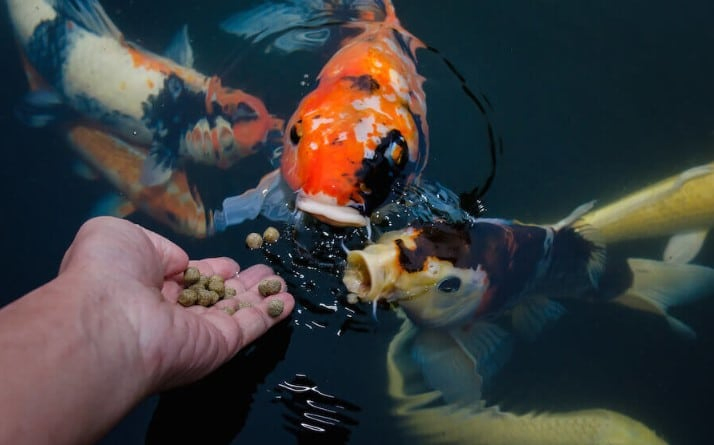
Koi fish are hardy and hungry. If it were up to them, they’d eat pretty much anything, as they are not notoriously picky eaters.
This doesn’t mean you should just feed them whatever you want, though.
As a decorative fish, hobbyists urge you to take extra care when choosing the right food for your koi. The quality of the food you give them can have a drastic impact on how their scales look.
Try to keep their diet as varied as possible. Giving them a mixture of high-quality floating pellets and live snacks, such as shrimp or blood worms, is recommended.
Try to observe how much your koi are eating and take precautions not to overfeed your fish. Overfeeding them can compromise the water quality in your pond.
A mix of decaying food or enhanced waste produced by overweight fish can lead to spikes in ammonia levels which can be detrimental to the health of your fish.
If you notice any food is going uneaten, try to scoop it out of the water before it decomposes at the bottom of your pond.
Koi Tank Mates
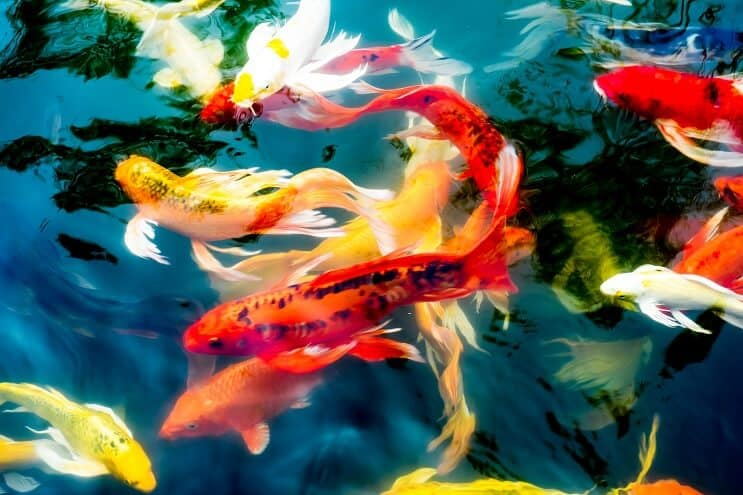
Koi fish are known for being friendly and engaging fish. Even beyond the water, there are documented accounts of them interacting with their owners who frequent the pond.
You have probably even seen a video or two of a dog having fun playing with a friendly koi. What do these actions say about the temperament of a koi fish?
Koi fish are social and need to be with others. Giving your koi the right companion is an important step towards ensuring that it is kept happy and healthy.
Can you keep koi fish together?
Koi fish make ideal pals for each other. They are completely docile and won’t try to hurt other fish or each other.
You must always have at least two koi fish in any habitat. They may show signs of loneliness and depression without a koi buddy.
Can other species be kept with koi fish?
Koi are also fine with being friends with other fish. Due to their docile nature, they can be kept with any fish which are about their size.
Anything smaller may be mistaken for a lively snack, so it is not a great idea to try to put a baby guppy into a pond with a 30-pound koi.
Other than size, the only other restriction is the nature of the other fish. Firstly, if they are prone to attacking other fish, they may bully and stress out the koi.
You must also ensure that the fish they live with are also fine with the habitat requirements of the koi. Many fish are not comfortable with such cold temperatures.
Other carps, such as goldfish, can make an ideal addition to a koi pond if they are large enough
Koi Fish Breeding
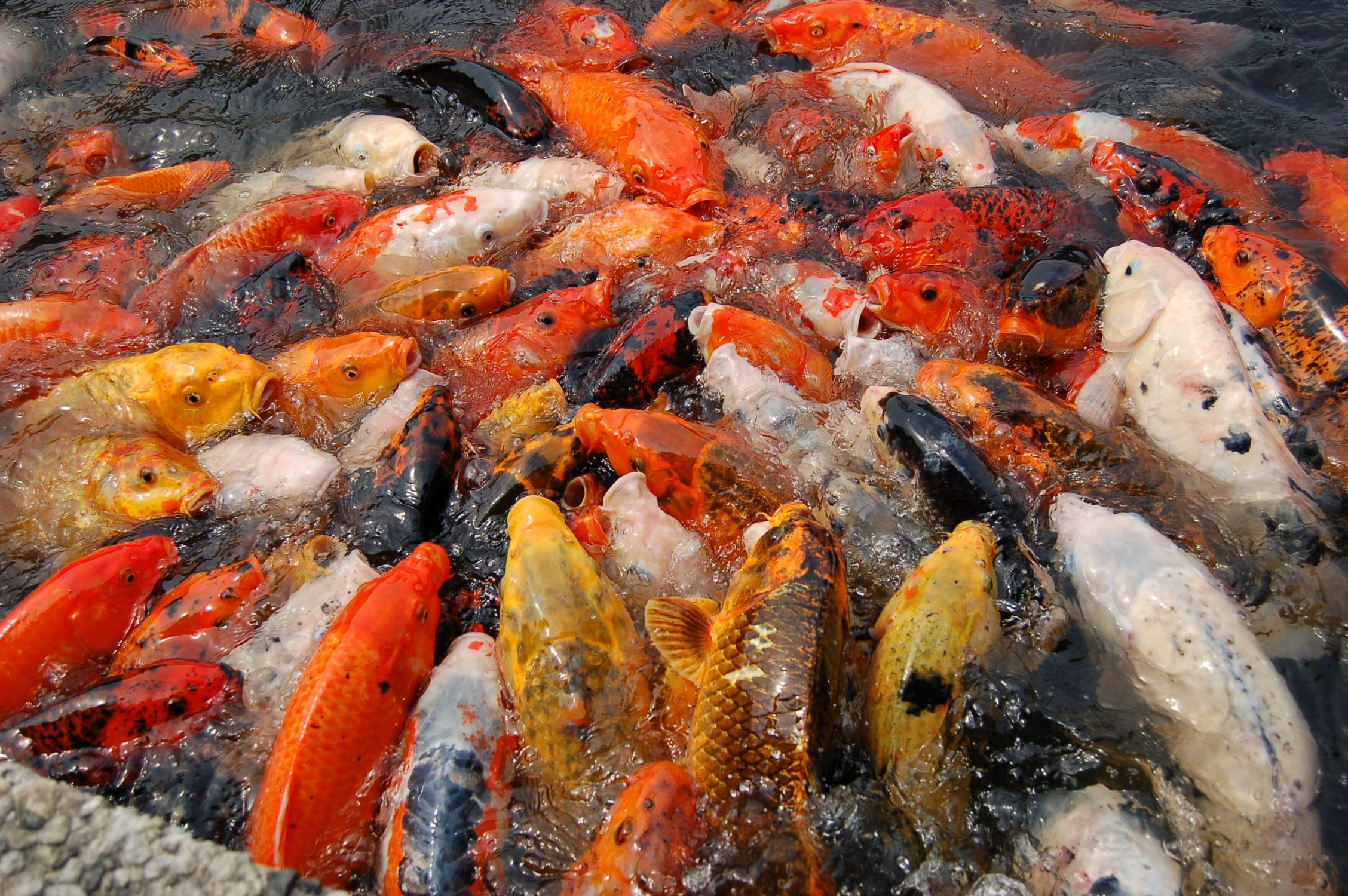
As their origins suggest, it is quite possible to breed your koi fish. In fact, there are koi breeders who make a living from this colorful carp.
1. Find suitable candidates: In order to end up with offspring, you will need a fertile male and female koi (around 3 years of age).
Sexing carp is pretty difficult outside of mating season. When your koi are ready to mate, males will develop small white growths on their pectoral fins and at the top of their heads.
Females remain the same visually throughout the seasons.
If you are looking to breed them for aesthetics, you may also want to consider the traits of your fishy bachelors.
2. Separate desired mating partners: Once you have figured out which fish you want to breed, separate them from the rest of your fish to reduce the chances of unwanted offspring.
3. Set the mood: This normally happens on its own in nature. During the summertime, when the temperature begins to rise, the changing temperature triggers the koi to start mating.
Make sure to keep the water extra clean and clear of debris. Feed them several times a day and keep them well-fed. Increase the amount of protein in their diet and offer them extra snacks such as lettuce.
This will give them extra nutrition and keep them confident about breeding.
It is a smart idea to remove any other fish from the habitat which may pose a threat to the eggs. Covering the pond with netting can also help keep away predators such as cats or birds.
4. Wait for them to mate: Give them a little alone time to mate. When you notice a frothy substance at the top of your pond, it has already happened.
Once you notice the signs of freshly laid eggs, remove the adult fish and put them with your other koi.
5. Take care of the babies: Once the babies hatch and are done with their yolk, make sure to feed them ground down koi pellets.
When they are large enough not to be swallowed by your other koi, they can join the rest of your fish.
Is the koi fish right for your aquarium?
Raising a koi fish can be a fun and enjoyable experience. This longstanding breed has a rich history and comes in a whole spectrum of varieties.
These vibrant fish are a great addition to a pond for those who have the space and time to look after them. With life expectancies which span several decades, you should be ready for a pet with the capability of outliving you.
It is easy to see how this carp has continued to be popular with breeders throughout the centuries. What do you think about koi fish?

